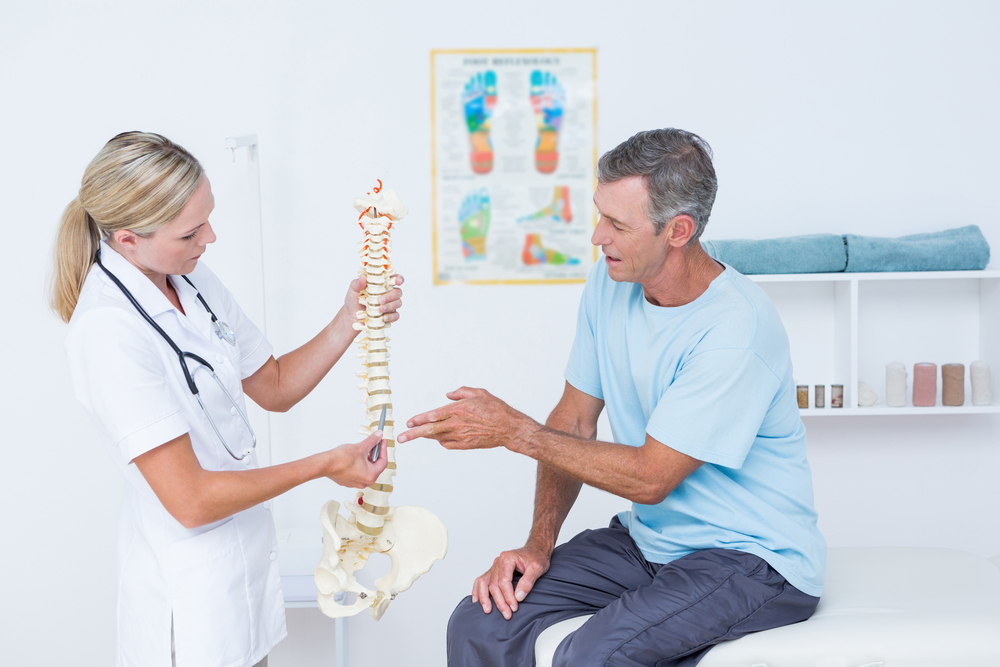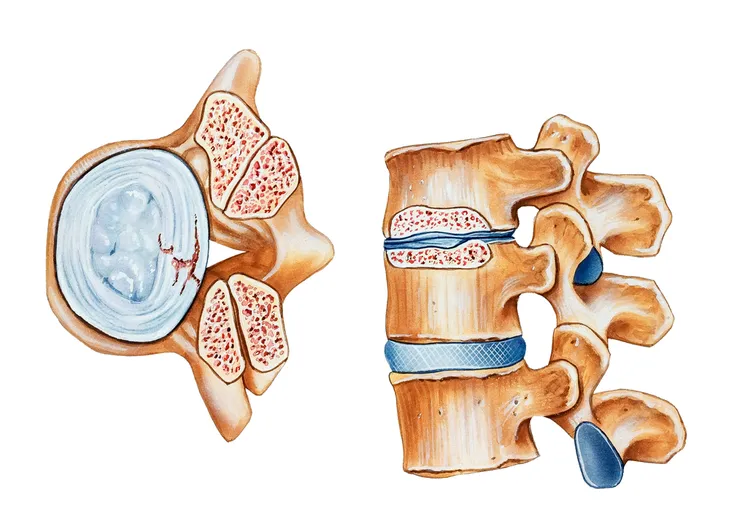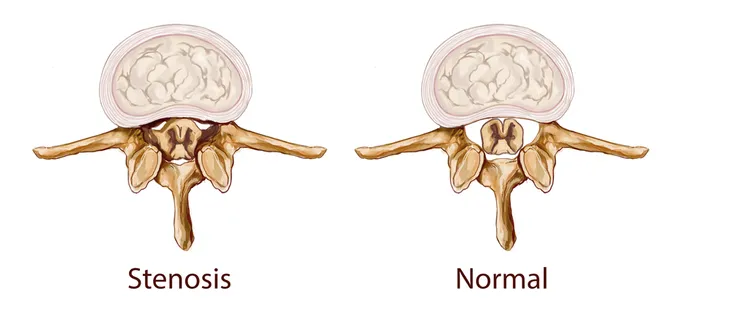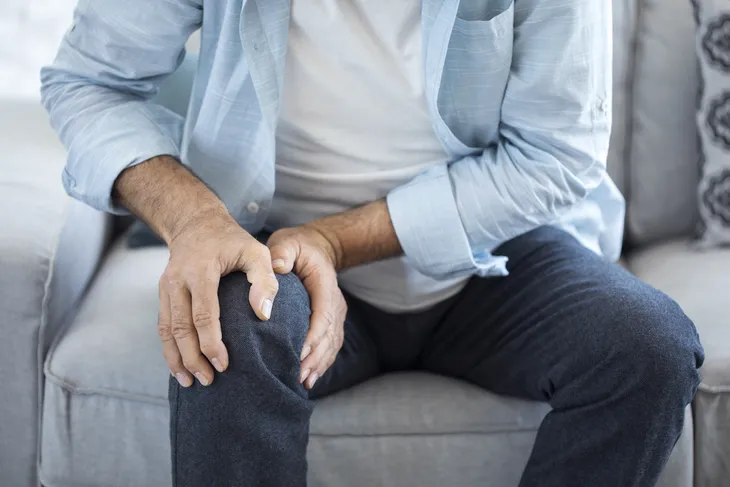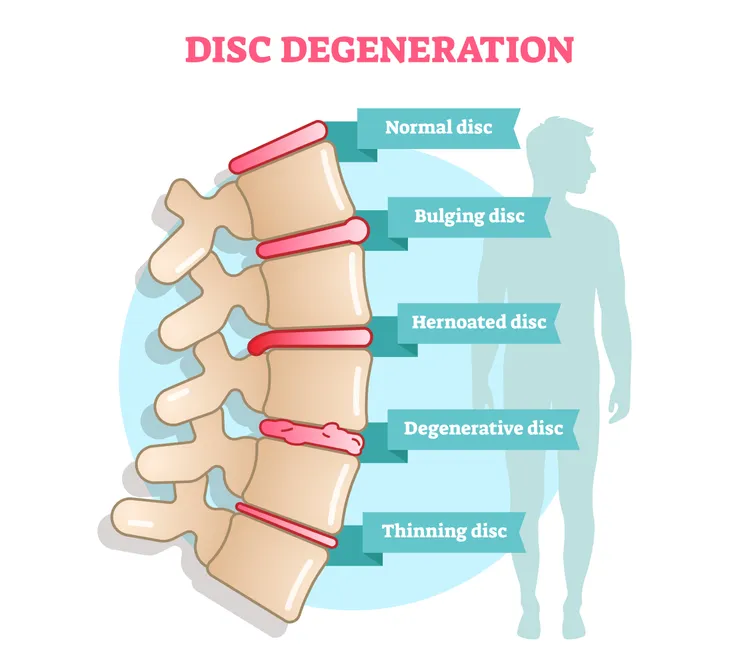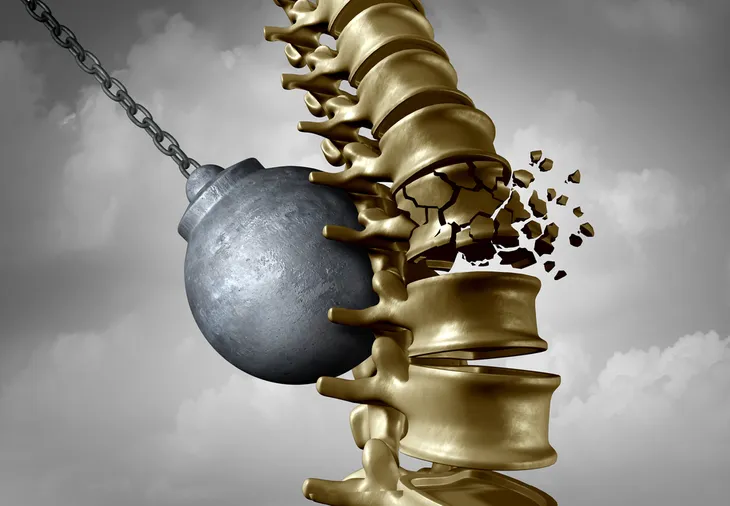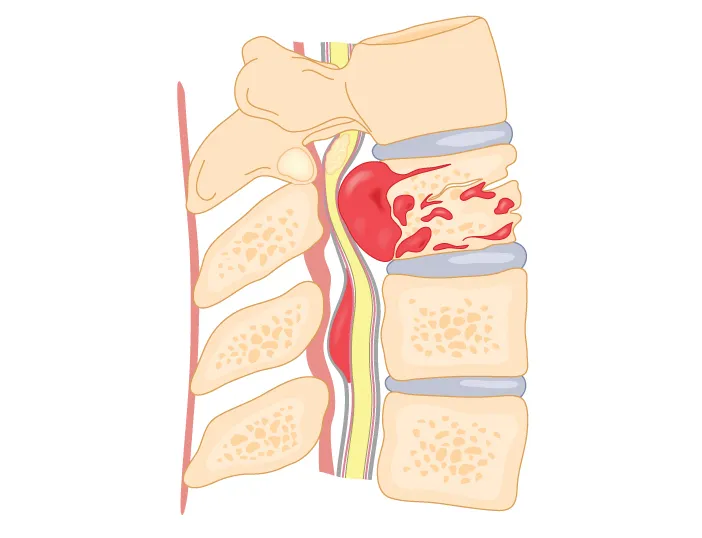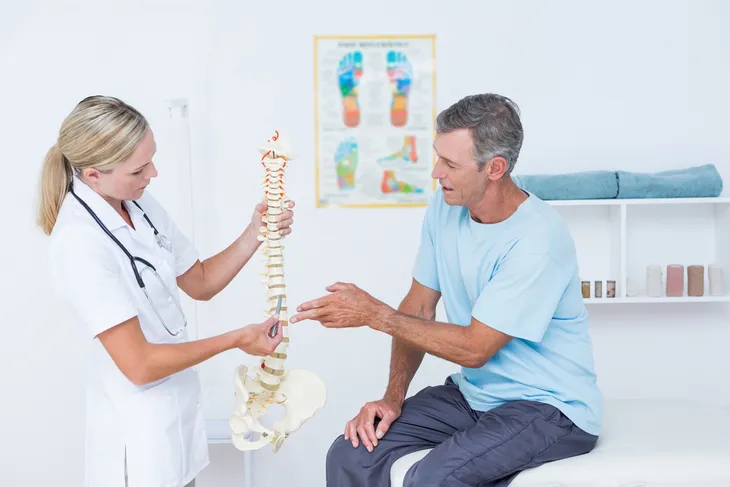It typically only happens in older adults over the age of 50, and just like it sounds, spinal stenosis affects our spine which is what supports our posture and stability. The spine is made up of a column of bones, also known as our vertebrae. This is what allows us to sit up straight and turn from side to side.
Even though our spine is big and strong, it’s actually quite delicate because it’s also made up of little nerves that run through our vertebrae to conduct signals to our brain and the rest of the body. “The surrounding bone and tissues protect these nerves. If they’re damaged or impaired in any way, it can affect functions like walking, balance, and sensation,” writes Healthline. When something is off with our spine, like spinal stenosis, it can lead to a lot of pain and discomfort and even cause more serious problems.
Let’s take a look at some of the common causes and risk factors of spinal stenosis…
What is Spinal Stenosis?
Now that we’ve covered the importance of our spine, how does a person develop spinal stenosis? According to Healthline, it occurs when the spine column begins to narrow, leading to compression of the spinal cord. This typically happens slowly over time and if the narrowing is minimal enough, a person might not even notice it’s happening because there won’t be any symptoms. However, if the narrowing becomes too advanced, it can cause some major problems.
We should also mention that there are two different types of spinal stenosis: cervical stenosis and lumbar stenosis. The main difference between the two is where they occur on the spine. Cervical stenosis is narrowing of the spine in the neck, whereas lumbar stenosis occurs in the lower back. While lumbar stenosis is more common, WebMD points out that it is possible to have both.
Now onto the common causes of spinal stenosis…
Primary vs. Acquired
We can categorize the causes of spinal stenosis two ways, as either primary or acquired. A primary cause of this condition means that it’s congenital, which basically means you were born with it. For some people, there is no rhyme or reason as to why they have spinal stenosis, they were simply born with a more narrow spinal canal than others. “This is a form of inherited spinal stenosis called short pedicle syndrome,” writes Spine Universe. “The signs or symptoms of primary spinal stenosis may not become apparent until adulthood; during midlife years.”
The next type is acquired, which means the person was not born with spinal stenosis, they developed it at some point in their life as a result of aging, disease, or injury.
Aging
The most common cause and biggest risk factor for spinal stenosis is age. In fact, WebMD notes that spinal stenosis is most common in adults over the age of 50 and older, because as we age, our spinal canal begins to narrow.
As we age, our body goes through natural degenerative processes. These processes might cause the tissues in the spine to thicken and bones might get bigger, causing compression of the nerves, says Healthline.
Arthritis
The second most common cause of spinal stenosis which also happens to be a risk factor, is arthritis. This is because like aging, it can cause our spinal canal to narrow. “The open spaces between the vertebrae may start to get smaller,” writes WebMD. “The tightness can pinch the spinal cord or the nerves around it, causing pain, tingling, or numbness in your legs, arms, or torso.”
People develop arthritis when there’s a breakdown of cartilage (the cushioning between the bones) and an overgrowth of bones which is why it’s also a risk factor.
Osteoarthritis
Osteoarthritis occurs when the protective cartilage on the ends of your bones begins to wear down over time. It’s often caused by aging joints, injury, and/or obesity. It’s also the most common direct cause of spinal stenosis. Like we mentioned in the previous slide on arthritis, osteoarthritis creates conditions that cause spinal stenosis or make it more likely to occur. WebMD explains, “Osteoarthritis can lead to disc changes, a thickening of the ligaments of the spine, and bone spurs. This can put pressure on your spinal cord and spinal nerves.”
Another condition very similar to osteoarthritis that can lead to spinal stenosis is rheumatoid arthritis.
Intervertebral Discs Disease
After osteoarthritis, another common cause of spinal stenosis is intervertebral disc disease. Remember the discs are poisitioned between the vertebrae in our spine. Spine Universe explains that intervertebral discs can bulge, or become torn and rupture, which is also known as a herniated disc. “A bulging disc or fragments from a herniated disc can then protrude into the spinal canal or pinch on the nerve extending through the foramen.” The source then goes onto explain that the ligaments connecting the vertebrae can degenerate and allow the vertebrae to shift which also pinches the spinal cord and nerves.
Intervertebral disc disease can occur as a result of aging, spinal injuries, poor posture, or from being overweight.
Injuries
There’s a reason people tell you to lift with your knees and not your back when carrying heavy objects! Any kind of injury to the spine puts a person at risk for developing spinal stenosis. The perfect and most common example is lifting a heavy object without following the proper technique. “This can damage a disc or even move the vertebrae out of their normal alignment,” writes Spine Universe. “Such injuries will put pressure on the spinal cord and nerve roots.”
A person could also fracture their spine which can cause fragments of bone to protrude into the spinal canal. Also, any injury can cause inflammation, and “tissue swelling that puts pressure on the spinal cord or nerve roots” can lead to spinal stenosis, as well as back and neck pain, according to the source.
Tumors
Spinal stenosis can be caused by bone tumors that grow either from a primary cancer on the spine or by spread from tumors in other areas of the body (metastatic tumors), says Medicine Net. Even if the tumor simply touches the spinal cord and doesn’t even grow on it, it can cause spinal stenosis, according to WebMD.
Paget’s Disease
Metabolic bone disorders, such as Paget’s disease, cause bone overgrowth which leads to spinal stenosis. It most commonly occurs in the pelvis, skull, spine and legs, says the Mayo Clinic. The risk of developing this disorder increases with age, particularly if it runs in the family.
WebMD lists it as one of the common causes of spinal stenosis and writes, “with this condition, your bones grow abnormally large and brittle. The result is a narrowing of the spinal canal and nerve problems.”
Bone Spurs and Thickened Ligaments
Bone spurs, also referred to as osteophytes, are “bony projections that develop along bone edges,” says the Mayo Clinic, often where bones meet each other at the joints. But they can also appear along the spine. They are created by the body in an attempt to repair the loss of the damaged area and limit the movement and pain caused by the bones rubbing together, explains Spine Universe, but instead of lessening the pain, they just create a different type of pain and can narrow the spinal canal, leading to spinal stenosis. Bone spurs can happen as a result of the wear and tear of aging or from osteoarthritis, a condition that breaks down the protective cartilage that works to cushion the ends of our bones.
Osteoarthritis can also cause “loss of the normal height of the discs between the vertebrae of the spine (degenerative disc disease, also known as spondylosis,) and overgrowth (hypertrophy) of the ligamentous structures.” If spinal ligaments thicken and harden, it can cause spinal stenosis.
Other Conditions
Healthline lists a few other causes of spinal stenosis, which we didn’t already discuss in this article. We touched on this lightly in the beginning of the article, but in some cases, this condition is caused by spine defects that are present at birth, such as a naturally narrow spinal cord. It could also be caused by spinal curvature, (i.e., scoliosis) or achondroplasia, which is a type of dwarfism.
How to Cope and Long-Term Outlook
Now that we’ve covered all the causes and risk factors of spinal stenosis, here are a few tips on how to cope with the symptoms. Stenosis is typically treated with steroid injections in the spinal column, as well as nonsteroidal anti-inflammatory drugs, physical therapy, and even surgery in some cases. But, there are also a few things you can do at home, such as using heat packs or cold compresses. You could also try acupuncture or a massage.
Being diagnosed with spinal stenosis isn’t the end of the world. While it can be painful and uncomfortable, Healthline points out that it doesn’t typically affect many aspects of your life. Even after going through treatment, there shouldn’t be much pain afterwards. In fact, people with spinal stenosis are able to maintain an active lifestyle. They may just have to make a few modifications to their level of activity.
